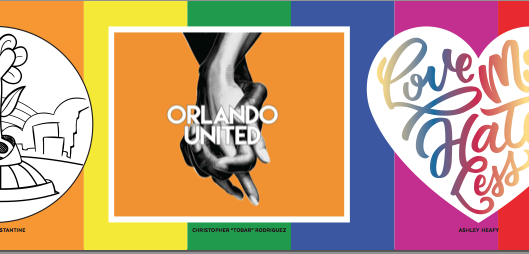
The city of Orlando is replacing the temporary security fence around the Pulse nightclub with a decorative one that will feature a screen wrap displaying art pieces created by local residents in response to the June 12 massacre that killed 49 people.
The new fence will go in next Monday, installed by the city, the Downtown South Main Street District, and the Orange County Regional History Center.
Meanwhile, starting Friday, authorities will collect the remaining hundreds of items left in memorial in front of the club. Those that can be salvaged will be taken to the Orange County Regional History Center to become part of that institution’s archive of Pulse tributes.
The commemorative screen will serve as a visual remembrance of those killed and the more than 50 injured during the Pulse shooting, and as a testament to the strength, unity and love demonstrated by the Orlando community in the face of tragedy, the city announced in a news release issued Tuesday.
Though safety remains a top priority, the new fence will be significantly reduced in size; ensuring residents, visitors, and employees and patrons of surrounding businesses can safely visit and navigate around the site by foot or vehicle.
For the past seven weeks, the Orange County Regional History Center has been working to carefully collect and archive all the non-perishable tribute items that have been placed at the Pulse nightclub site; all items are being cataloged and photographed before their long-term preservation at the center.
On June 12, armed madman Omar Mateen, pledging allegiance to ISIS and hatred of gays, opened fire in the popular gay nightclub, killing 49 and wounding 53, before police shot him.
Already, the history center has more than 3,500 items left in tribute at the nightclub, at the Dr. Phillips Center For the Performing Arts, and other locations around Orlando. The center also will be collecting other items related to the event, including photographs, stories, social media items, artwork, and more, so these memories will be available for future generations.
The city will collect the remaining flowers and bring them to Leu Gardens, where they will be organically turned into soil that will be used in gardens throughout the city. The city will also be collecting the candles and storing them.


